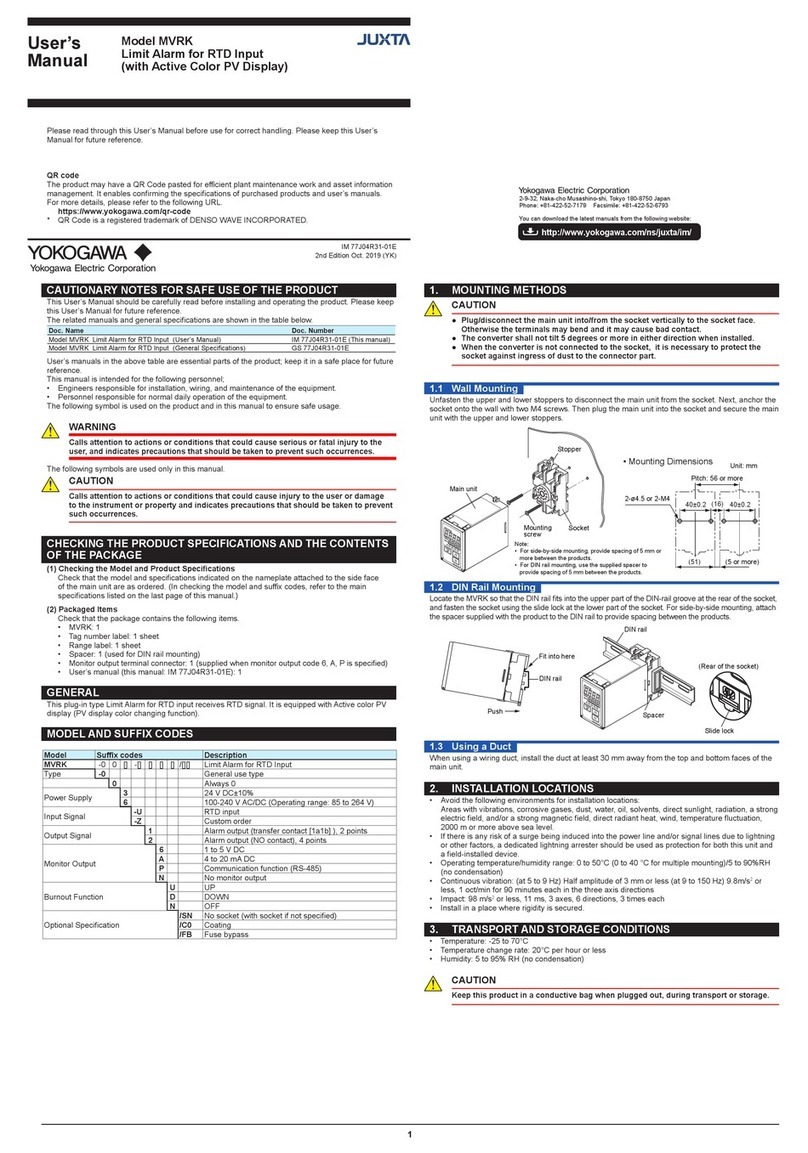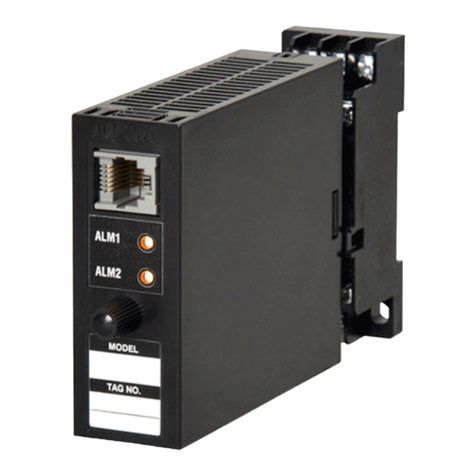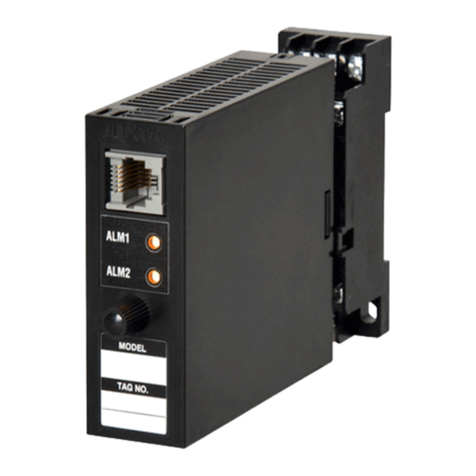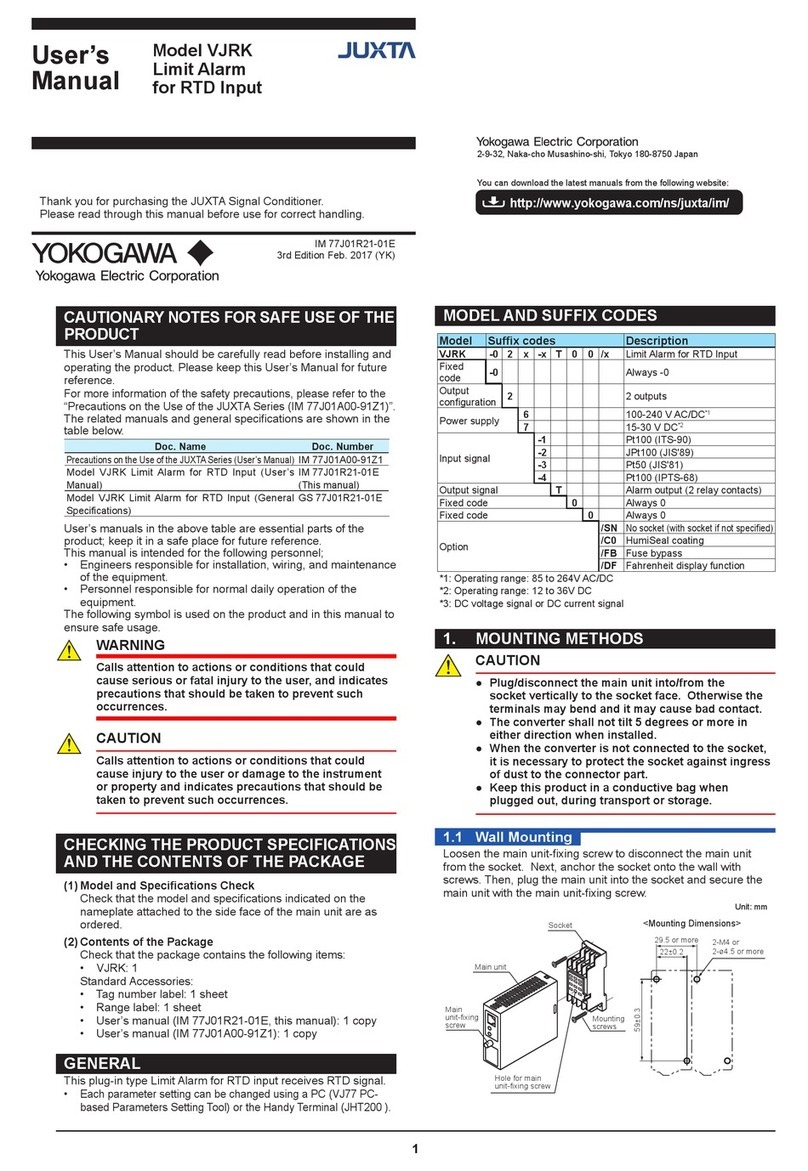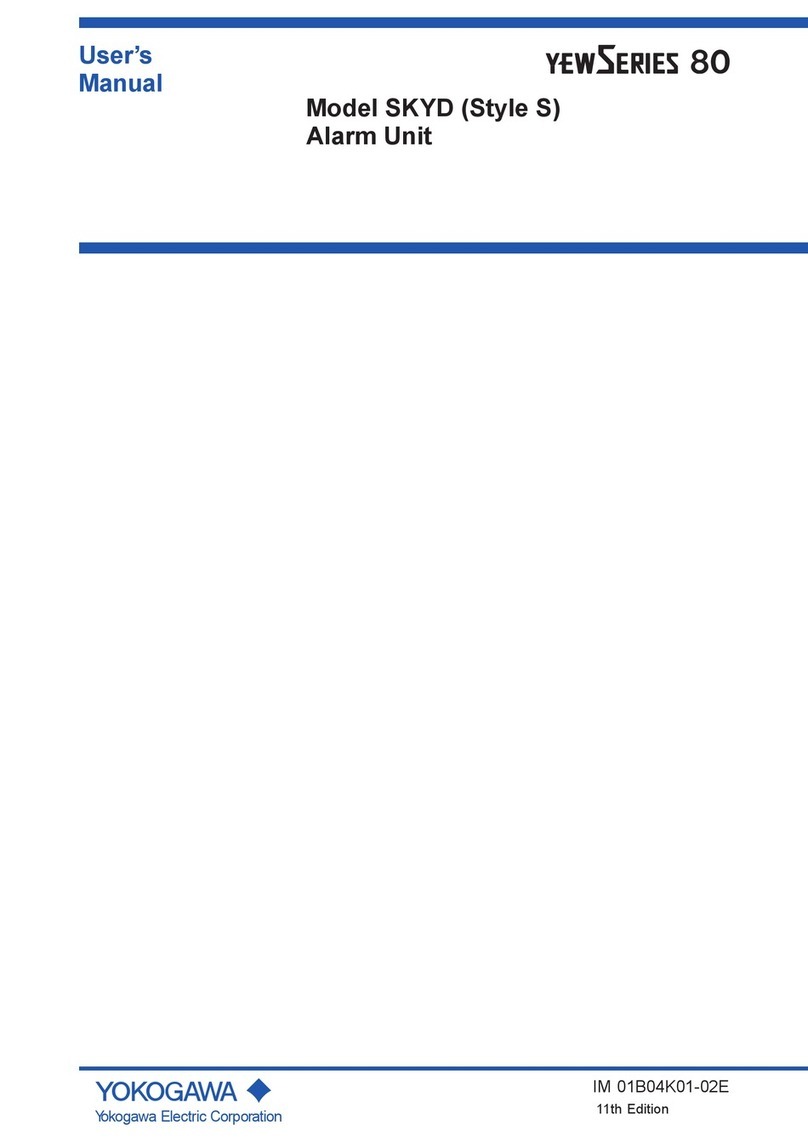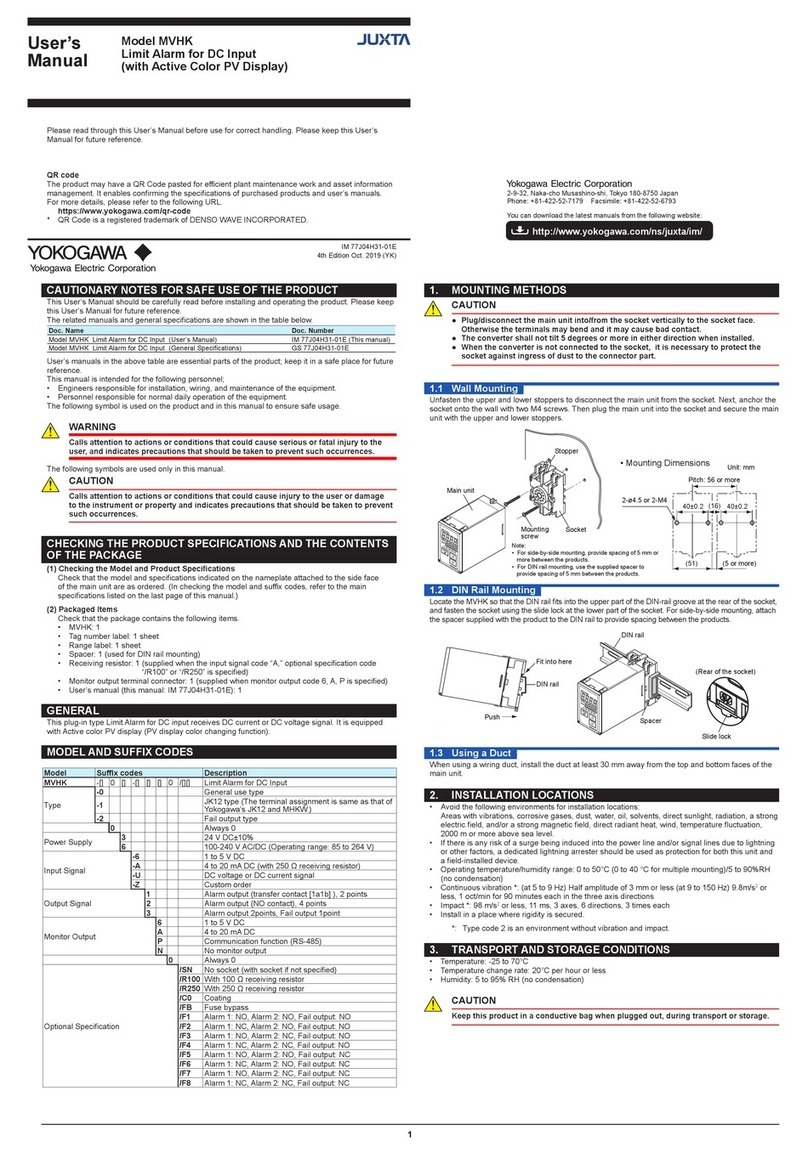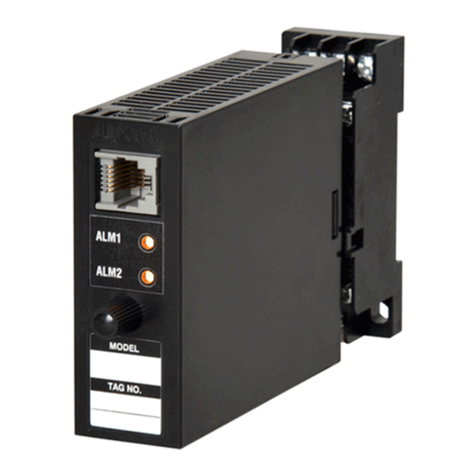
3IM 77J01H21-01E 5th Edition
4.2 Connecting the Setting Tools
Used to set JUXTA parameters on a PC (VJ77 Parameter Setting
Tool).
JUXTA
VJ series
conversion
adapter
Dedicated adapter for VJ77
(L4506HA)
Micro USB (USB2.0) cable
• Use the VJ77 of version R2.02.01 or later.
5. SETTING PARAMETERS
Set the parameters using a PC (VJ77 PC-based Parameters
Setting Tool). Refer to the list of parameters in this manual and
the user’s manual for VJ77 PC-based Parameters Setting Tool
(IM 77J01J77-01E).
5.1 Settings Related to Input
5.1.1 Input Type
Select the input type from among VOLTS (DC voltage) and
CURRENT (DC current) in [D12: INP TYPE].
5.1.2 Input Range
Set the 0% value of input range in [D25: INPUT1 L_RNG]
and the 100% value of input range in [D26: INPUT1 H_RNG]
numerically within the specied range.
5.1.3 Software Filter
Set the software lter in [D57: S/W FILTER].
OFF, LOW, MIDDLE, HIGH (default value: OFF)
When LOW, MIDDLE, or HIGH is selected, a rst-order lter
equivalent to 100 ms, 300 ms, or 1 s is inserted in the input.
5.1.4 ExternalInputResistanceCorrection
For current input, set the external resistance to [D13: IN
RESIST]. There is a dierence between this value and the
actual external resistance. If this dierence causes an error,
the input can be corrected.
To perform correction, wire as shown in the gure below, apply
a stable input equivalent to 100%, and set [P40:RESISTOR
ADJ] to EXECUTE.
If you need perform correction again such as when the
external resistance is changed, reset the correct value. To do
so, set [P40: RESISTOR ADJ] to RESET.
A current
generator
VJHK
R:External resistor
R
1
3
5.2 Settings Related to Alarm Output
5.2.1 Alarm Setpoint
Set the alarm setpoints of alarm 1 and alarm 2 in [E03: SET
POINT1] and [E04: SET POINT2] numerically.
• Setting range: 0 to 100% of input range
• Setting resolution: 0.1%
5.2.2 Direction of Alarm Action
Select the direction of alarm-1 action and that of alarm-2
action from among HIGH ALM (high-limit alarm) and LOW
ALM (low-limit alarm) in [E05: ALM1 ACTION] and [E06:
ALM2 ACTION].
• To activate alarm status when input signal ≥ alarm setpoint,
select HIGH ALM.
• To activate alarm status when input signal ≤ alarm setpoint,
select LOW ALM.
5.2.3 Hysteresis
Set the alarm-1 and alarm-2 hysteresis in [E09:
HYSTERESIS1] and [E10: HYSTERESIS2]. Hysteresis is a
value added to the alarm setpoint in order for an alarm status
to be released (to normal) after the alarm status has been
activated. The alarm status will be released in the following
conditions, depending on the direction of alarm action.
* When HIGH ALM (high-limit alarm) is set: Alarm is released
when input signal < (alarm setpoint - hysteresis).
* When LOW ALM (low-limit alarm) is set: Alarm is released
when input signal > (alarm setpoint + hysteresis).
• Setting range: 0 to 100% of input range
• Setting resolution: 0.1%
5.2.4 Alarm ON Delay and Alarm OFF Delay
Set the alarm-1 and alarm-2 ON delays in [E11: ON DELAY1]
and [E12: ON DELAY2] and then alarm-1 and alarm-2 OFF
delays in [E13: OFF DELAY1] and [E14: OFF DELAY2].
An alarm ON delay is the condition monitoring time from the
establishment of alarm conditions to its output; an alarm OFF
delay is the condition monitoring time from the establishment
of return-to-normal conditions to its output.
• Setting range: 0 to 999 seconds
• Setting resolution: 1 second (However, about 0.2 second is
to be added to the set time to prevent wrong operation.)
For example, when an alarm ON delay is set to 1 second,
alarm output is generated if alarm status continues for 1
second or more after the input value exceeds the alarm
setpoint. Further, when an alarm OFF delay is set to 2
seconds, alarm output is released if normal condition
continues for 2 seconds or more after the input value has
returned to normal from the alarm status.
5.2.5 Direction of Relay Action
Select the direction of relay energizing in alarm-1 normal
condition and alarm-2 normal condition from among NRM DE-
ENERGIZED (de-energized under normal condition) and NRM
ENERGIZED (energized under normal condition) in [E15: RL1
ACTION] and [E16: RL2 ACTION].
6. DESCRIPTION OF ALARM ACTIONS
This chapter describes examples of alarm actions under the
following conditions.
Item Alarm 1 Alarm 2
Parameter Setpoint Parameter Setpoint
Direction of
alarm action
E05 : ALM1
ACTION
High-
limit
alarm
E06 : ALM2
ACTION
Low-limit
alarm
Alarm setting E03 : SET
POINT1 80% E04 : SET
POINT2 15%
Hysteresis E09 :
HYSTERESIS1 10% E10 :
HYSTERESIS2 5%
Alarm ON
delay
E11 : ON
DELAY1 1 sec E12 : ON
DELAY2 3 sec
Alarm OFF
delay
E13 : OFF
DELAY1 2 sec E14 : OFF
DELAY2 4 sec
Description of
alarm actions
The alarm is output if the
condition where the input
value is 80% or more of
high-limit alarm continues
for 1 second or more.
After the alarm is output,
when the condition where
the input value is less than
70% of high-limit alarm
continues for 2 seconds or
more, the status returns to
normal.
The alarm is output if the
condition where the input
value is 15% or less of low-
limit alarm continues for 3
seconds or more.
After the alarm is output,
when the condition where
the input value is more
than 20% of low-limit alarm
continues for 4 seconds or
more, the status returns to
normal.
